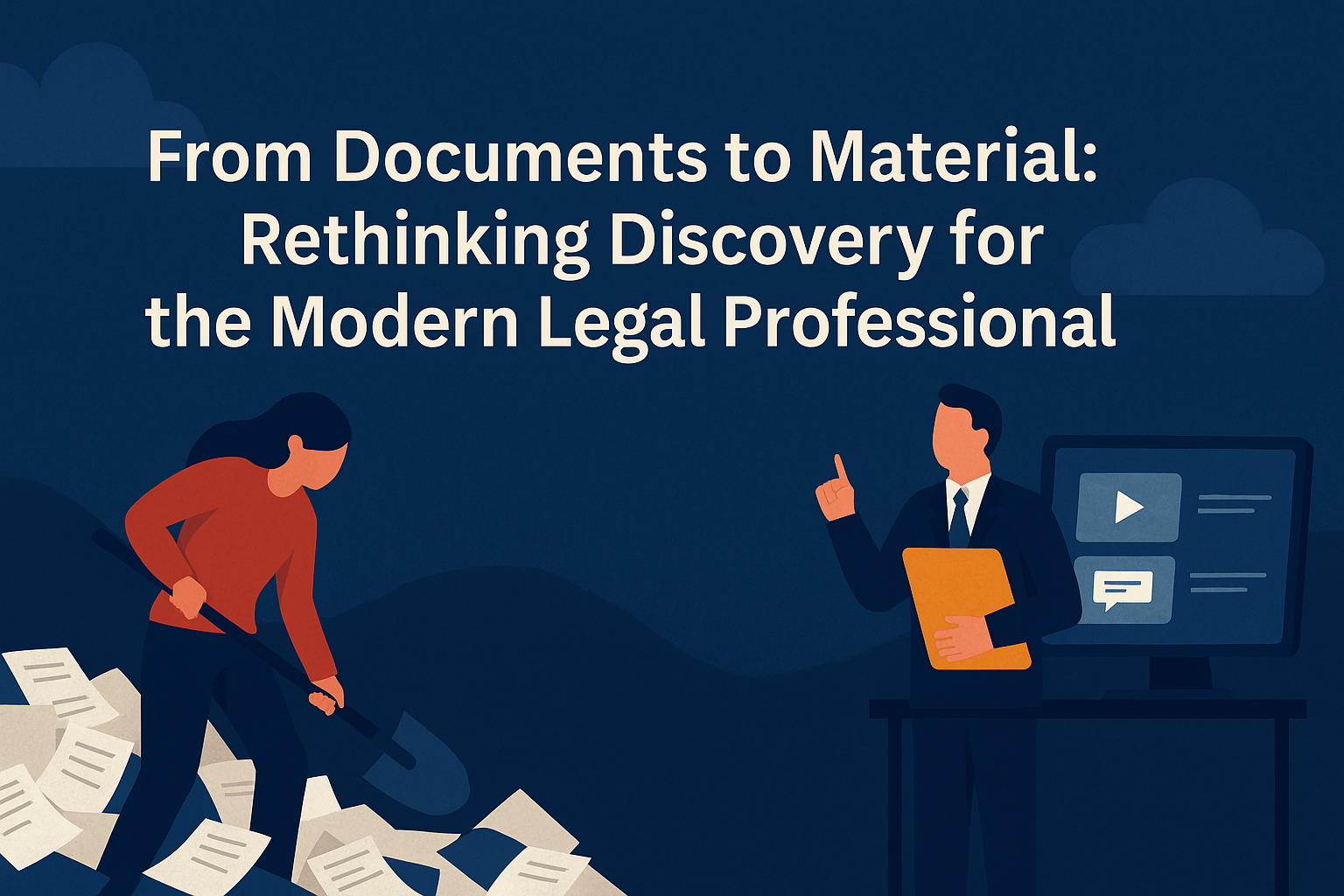Truth First: Why Matey’s AI Isn’t Just Fast. It’s Objective
Learn how Matey’s AI combines speed, accuracy, and objectivity to deliver trustworthy insights legal professionals can rely on.

Discovery has traditionally meant “document dumps” - emails, PDFs, spreadsheets, and transcripts. But this framing is outdated. The real value isn’t the container (the document) but the material inside - facts, statements, admissions, and contradictions that drive legal strategy. Shifting your focus from documents to material makes discovery faster, smarter, and more targeted.
Legal professionals are trained to handle discovery as sets of paginated, Bates-stamped files. But with modern data sources - Slack, Teams, cloud platforms, video calls- the “document” mindset breaks down.
Material means focusing on the legally relevant pieces of evidence, regardless of format:
Instead of asking: “What’s in these 12 PDFs?” ask:
“Where is every statement that shows when the issue was first reported?”
Matey AI helps:
A paralegal using Matey reviewed:
Matey extracted:
Result: 2–3 days of review condensed into under 4 hours.
Documents are formats. Material is evidence. By shifting your mindset, you:
Matey AI is built on this principle. We help legal teams discover material across text, audio, video, and chat - so you work faster and more effectively.
What is material in discovery?
Material is the legally relevant substance - facts, admissions, contradictions—inside a document, audio, or video file.
Why is a document-based approach outdated?
Because modern evidence includes chat logs, cloud data, and recordings. A “documents only” mindset misses critical non-document sources.
How does Matey AI identify material?
Matey uses AI to detect key statements, contradictions, and timelines across all evidence types, surfacing them instantly.
Can this save my team time?
Yes. Teams using Matey regularly cut review time by more than 50%.
Is material-based discovery accepted in legal workflows?
Yes. Courts care about relevant evidence, not file formats. Material aligns directly with evidentiary value.